Best Things to Do in Paracas, Peru – A Complete Guide
This is your complete guide to the small Peruvian coastal town of Paracas, a place where the desert meets the sea and one that’s often referred to as ‘the poor man’s Galapagos’.
In this guide, you can read about how to get to Paracas, when the best time to visit the town is and how long you ideally need to spend there to see the best of it. The guide wouldn’t be complete without including all the best things to do, with many of our little tips from personal experience, so you can have the best time there.
If you’d like to see our Paracas adventures, then make sure to watch our video on YouTube. For more Peru videos, check out the Peru Playlist on our YouTube channel.
Disclosure: This post may contain affiliate links, which means we may receive a small commission if you click a link and purchase something. Clicking these links won’t cost you anything, but it will help us to keep this site up and running! Learn more about our affiliate policy.
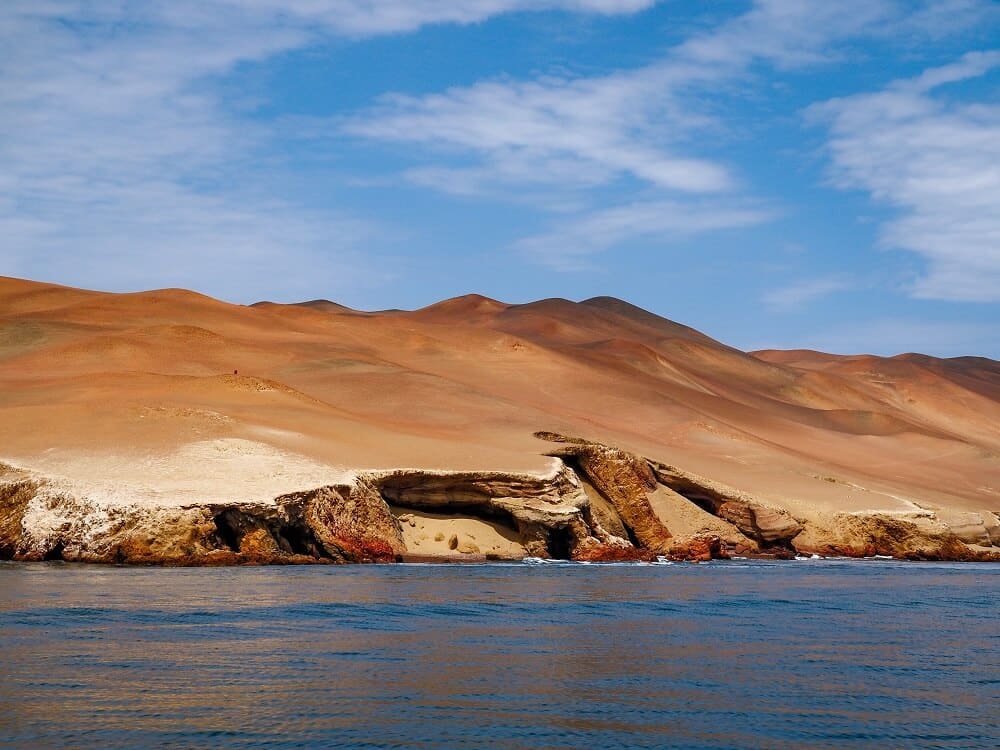
All You Need to Know About Paracas, Peru
Paracas is a small port town located in the Ica Region, about 260 km (160 miles) from Lima. Once home to the Paracas culture, today the town is a major beach resort in Peru. The name ‘Paracas’ comes from the Quechua words ‘para’ (rain) and ‘acco’ (sand). The origin of the name couldn’t be any more appropriate, since the town lies in a windy area where sandstorms are quite common.
Did you know? – The Paracas culture was a prehistoric civilization that existed between 800 BCE and 200 BCE. Excavations starting from the 1920s have revealed a necropolis of well-preserved mummies. These mummies were buried in two different types of chambers: the Paracas Cavernas and the Paracas Necropolis crypts. This is also where embroidered textiles were found wrapped around the mummies. Apparently these textiles are some of the greatest examples of pre-Columbian Andean fibre art.
Over the years Paracas has become a well-known beach resort and is favoured by both Limeños and tourists. Whilst the beach itself isn’t one to write home about, there are a few top sights that are well-worth stopping for, such as Islas Ballestas and Paracas National Reserve. Plus, it’s a great sunny getaway for travellers before they head to the mountainous regions in Peru.
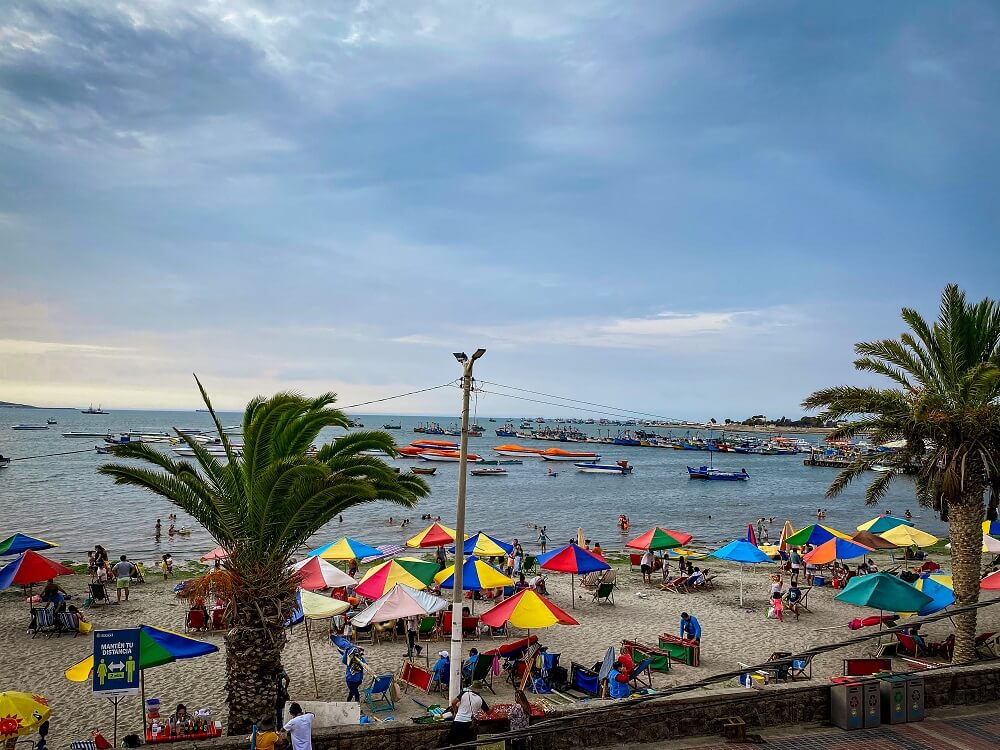
How to Get to Paracas, Peru
Since Paracas is on most travellers’ itinerary, it’s an easy place to get to. The town is located about 260km to the south of Lima. You can get there in about 3.5 to 4 hours by bus. There are a few bus companies you can choose from depending on your overall Peru itinerary.
Peru Hop – If you’re on a south of Peru tour, then booking a Peru Hop bus pass might be a great option for you. It’s a safe and favoured bus company by many and has many pros which you can read about in our bus guide to Peru. They will pick you up from your hotel in Lima so you won’t need to travel to a bus terminal. You can also get discounts on certain accommodations in Paracas with your Peru Hop pass. Plus, you can go on a free tour to the Paracas National Reserve with them.
Cruz del Sur – If you’re not doing your bus travel with Peru Hop, then you can reach Paracas from Lima with Cruz del Sur. It’s a great bus company to travel with during your stay in Peru. Depending on the type of bus you’re travelling on, tickets could cost between S/.40-S/.60 (US$10-15 / £9-12). You can buy your ticket online or at the bus station.
You can find bus routes and companies operating to and from your next destination on these websites: Busbud.com, and Rome2Rio.
Read our detailed guide on how to travel by bus in Peru.
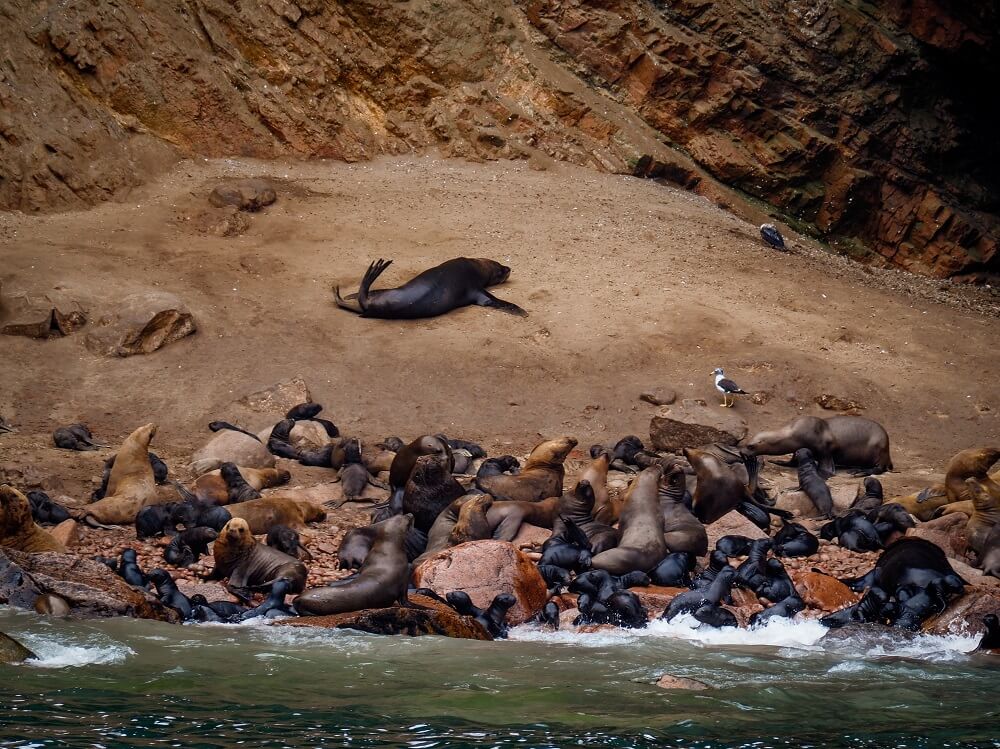
Best Time to Visit Paracas, Peru
Luckily, Paracas enjoys a warm and dry desert climate all year round. Because of its climate, there’s no rainfall, so you can definitely enjoy sunshine and outdoor activities. Although, bear in mind that the weather does change from warmer to cooler in the winter season. This means that boat tours to Islas Ballestas could get cancelled more often.
Another thing to bear in mind is the Paracas sandstorms are normally between August and October. The town is located in a windy area and these air currents carry sand. It’s not a coincidence that the town’s name Paracas comes from the Quechua words: ‘Para’ meaning rain and ‘Acca’ meaning sand.
For this reason, probably the best months to visit Paracas would be between December and March, which are the summer months. Of course this is also when the town will be the busiest since Peruvians have their summer holidays at this time.
Another thing to consider is what wildlife you’d like to see during your visit. If you’d like to see Humboldt Penguins for example, then April to November is the best time. We were there at the start of March, and only saw one (I repeat: one) Humboldt penguin on Islas Ballestas. Luckily, sea lions and different birds are there all year round ,so we saw plenty of them.
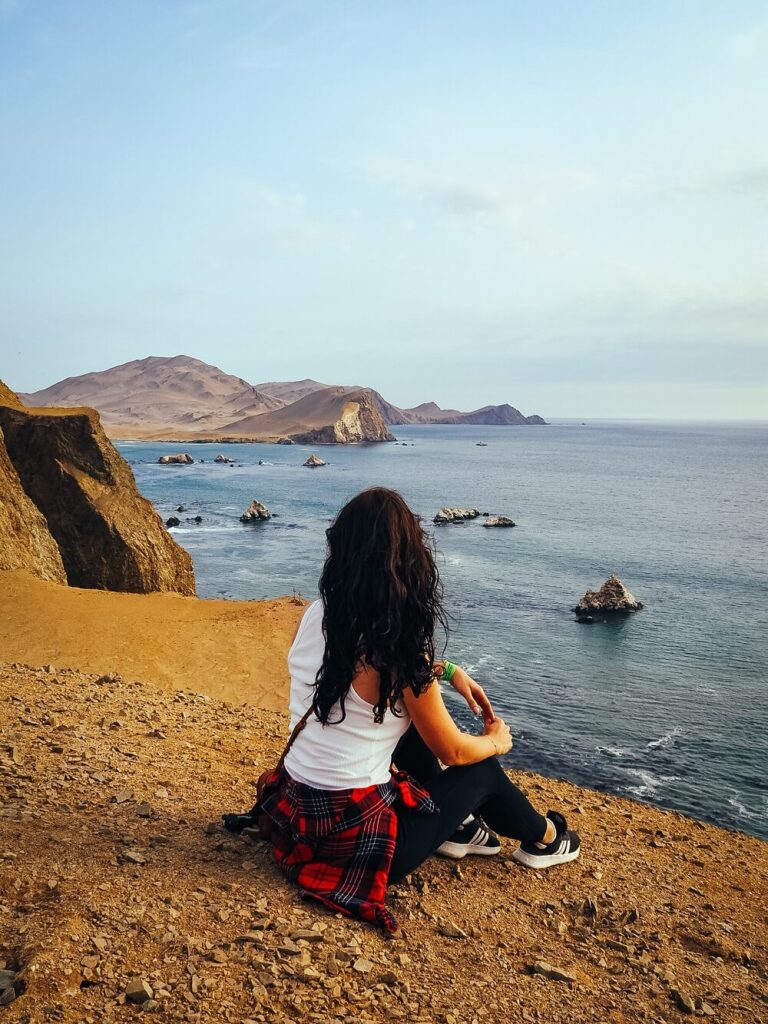
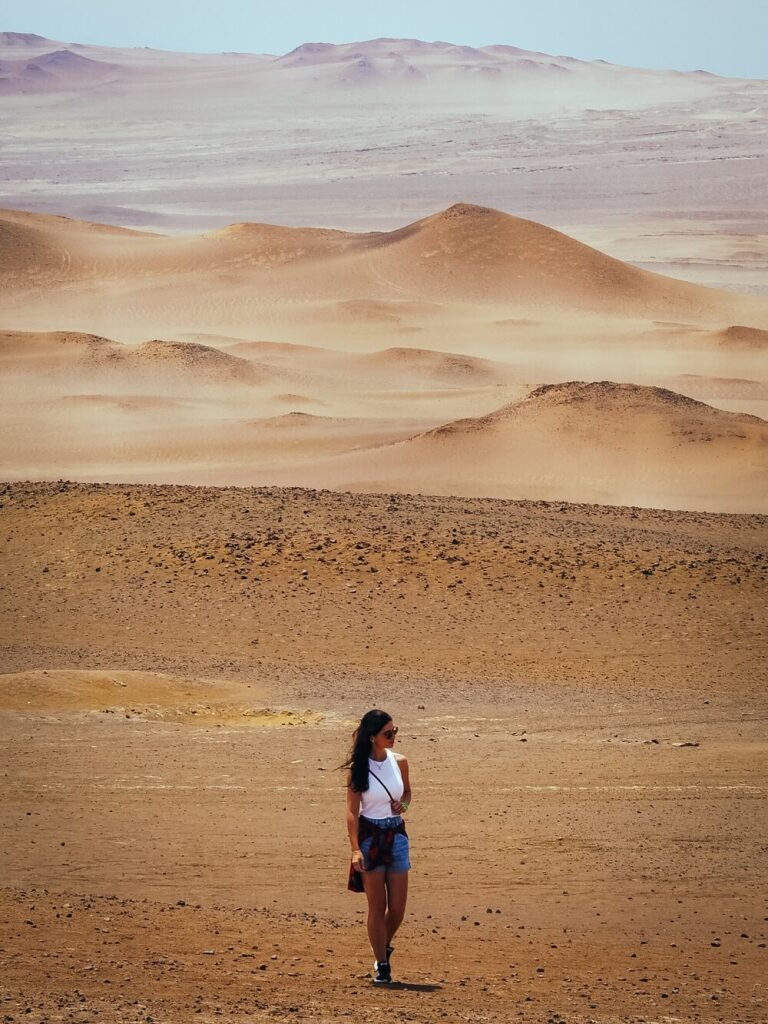
How Long Do You Need in Paracas, Peru
Most travellers would either stay one night or just the day in Paracas before heading to their next stop. This is especially true if they only have limited time and are travelling with Peru Hop. For reference, we stayed 3 nights, which is very rare, unless you’re a slow traveller like us.
Other than time restrictions, you can determine the length of your stay by deciding what you want to do in Paracas. If you just want to do a tour of Islas Ballestas or Paracas National Reserve, then you don’t need to spend a night. However, you can’t do both! If you’re on a Peru Hop bus, they will arrive just before 10AM, when the last boat tour to Islas Ballestas leaves. At 10AM you can also join their free tour around Paracas National Reserve that’s included in your bus pass. The Peru Hop bus to the next stop will then leave around 1PM. So, you can only fit in one activity, a quick lunch and be in Huacachina by late afternoon.
If you’d like to do both activities, then you’ll need to stay at least one night. This way, you can do either the Islas Ballestas tour or the National Reserve tour upon arrival and the other one the next morning. By staying a night, you’ll also have the chance to go on a cool sunset hike in the reserve which is a pretty great experience. You’ll also have time to walk around the fishing town, trying a few different restaurants and cafes. Most importantly, if the Islas Ballestas tour is cancelled due to bad weather (they cancel a lot!) then you’ll have a better chance to go the next morning.
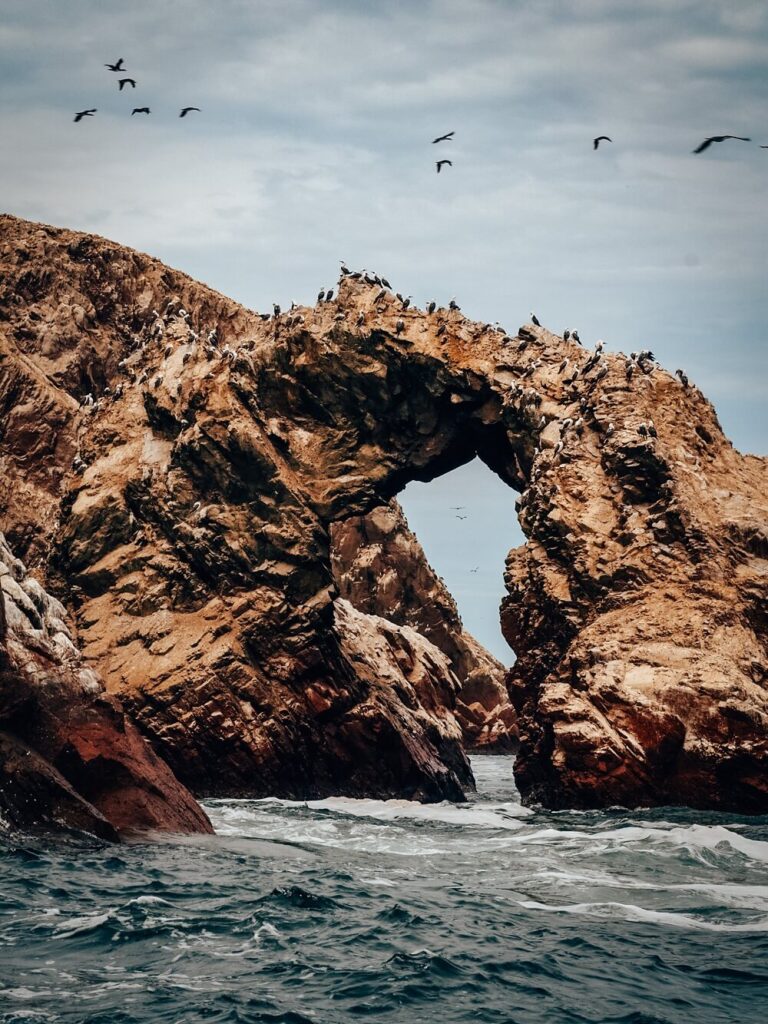
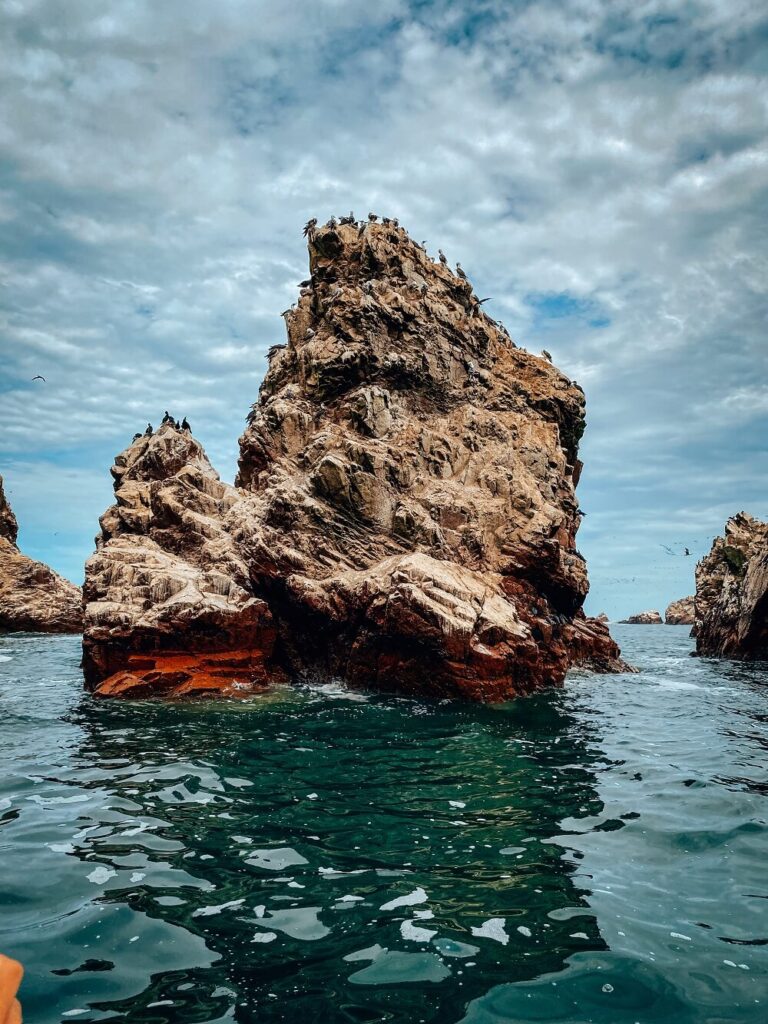
Best Things to Do in Paracas, Peru
1. Take an Islas Ballestas Tour
Many travellers only come to Paracas to take a tour to Islas Ballestas since it offers probably one of the best wildlife spotting experiences in Peru. I bet that you won’t believe your eyes seeing the huge amount of creatures living on the tiny islands. For this reason, they often refer to Islas Ballestas as the ‘poor man’s Galapagos’.
The Ballestas Islands are located about a 30-minute speedboat ride from the coast of Paracas. The islands are actually not within Paracas National Reserve, they belong to the Guano Islands, Islets, and Capes National Reserve System. The isles are comprised of three main islands: Ballesta Norte, Ballesta Central, and Ballesta Sur. Erosion has created rock formations, caves, and arches that provide homes to the largest collection of wildlife we’d ever seen in one spot.
During your tour you’ll be able to spot the endangered Humboldt penguin, South American sea lions, fur seals, and hundreds of birds such as Guanay, Inca terns, Kelp gulls, and Peruvian pelicans. The reason why wildlife thrives here is because the Humboldt Current brings lower temperatures and nutrients to the surface. This is ideal for fish and of course that attracts bigger predators.
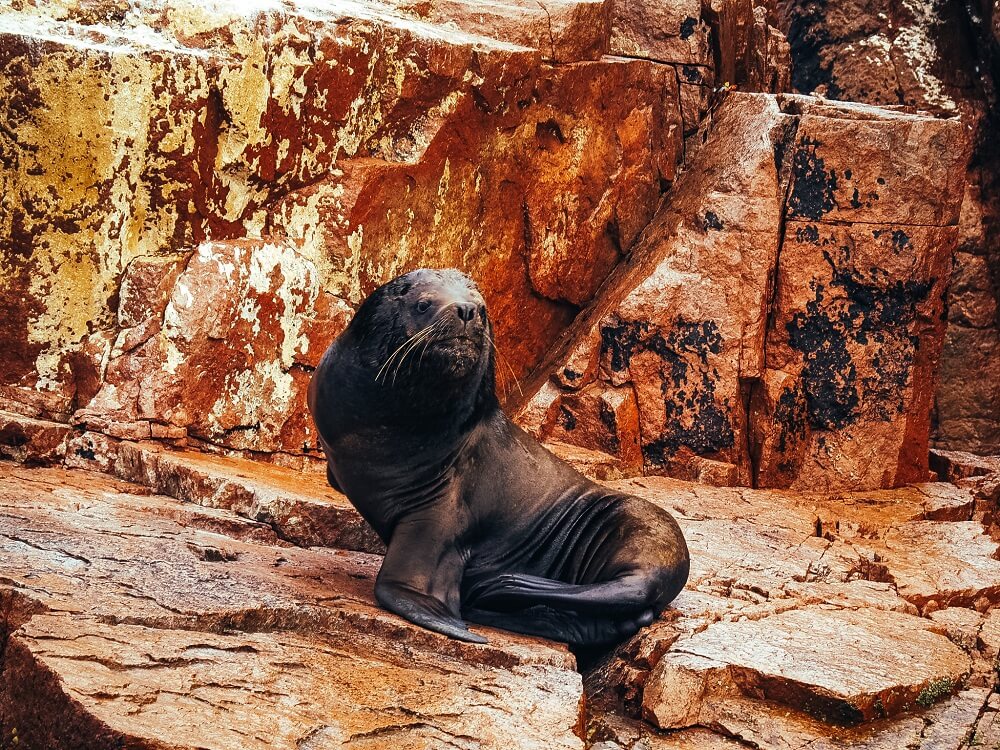
Islas Ballestas Tour Information
There are normally two tours in the morning, one at 8AM and the next at 10AM. The boat tours costs around $US20 per person and you also have to pay a S/. 16 port fee. You’ll have a bilingual guide on the boat providing you with historical facts and information on the animals you’ll see. The tour normally lasts about 2 hours. You can’t set foot on the islands or swim since its a protected area.
Note – Cancellations are very common, due to bad weather conditions. However, conditions can change quickly. We had three cancellations during our stay and were giving up on seeing the islands when they suddenly called us that the port was open. Even if the water looks calm from the town, at Islas Ballestas the conditions could be dangerous for boats.
If you suffer from motion sickness, we recommend taking some medication before your tour. It can be a bit choppy out there.
Good to know – You can see baby sea lions on what’s called the ‘maternity beach’ between January and March. (We visited at the start of March and the beach was packed with playful babies). The best time for Humboldt penguins is between April and November. As I mentioned before, we only saw one in March. Between August and October you might spot some Humpback Whales.

2. Admire the Giant Candelabra
Other than seeing the incredible wildlife, the second best part of the Islas Ballestas tour is the Candelabra or ‘the chandelier’. The Paracas Candelabra is a 180m tall geoglyph, very similar to the Nazca Lines.
There’s still a lot of mystery around this design. Scientists managed to carbon date some pottery that was found nearby to 200 BC. This is the time the Paracas culture was active in the area. However, there’s still no concrete evidence whether the Paracas culture constructed it or not and what the purpose and the meaning of this huge glyph is.
Of course there are different theories and myths associated with the Candelabra. Some of the most popular ones suggest that it represents the Holy Trinity and others that it was used as a navigational tool for sailors.
Since you can only really appreciate the Candelabra from a boat, taking the Islas Ballestas tour will give you the chance to see it and learn more about the legends surrounding this crazy design.

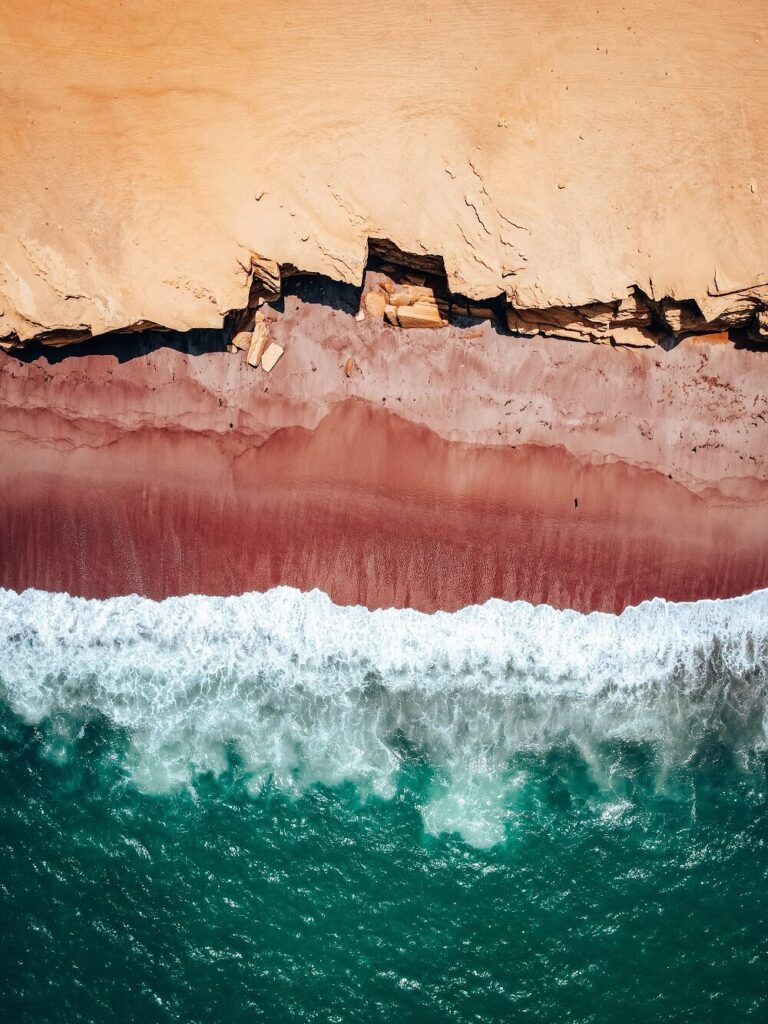
3. Visit Paracas National Reserve
Other than the Islas Ballestas tour, a visit to Paracas National Reserve should be on every traveller’s itinerary when visiting Paracas. The reserve was created in 1975 and covers around 335,000 hectares. It is a protected area that consists of desert, ocean and islands.
As you tour around the reserve you’ll see that the land is extremely dry with very little vegetation. Despite how arid it is, Paracas National Reserve is home to over 70 species of plants, more than 200 species of birds, around 16 types of mammals, and a further 10 species of reptiles.
If you’re travelling with Peru Hop, then a tour of the reserve is included in your bus pass. This particular tour leaves at 10AM every day and mainly explores the northern parts. During your visit you’ll stop at La Catedral which used to be an iconic sea arch. Unfortunately, it got destroyed in an earthquake in 2007 but the view is still insane.
Your next stop will be a viewpoint of Playa Roja, or Red Beach, which has maroon-coloured sand. The colour combination of the desert, the beach and the sea will definitely leave you speechless. After admiring the beach from a distance, the tour will finish with a closer look at the beach.
You can of course visit Paracas National Reserve independently or with a different tour. It’s a bit far from Paracas town itself, so you’d need your own vehicle or a bike to get there. Distances between viewpoints are also pretty great so bear this in mind when planning your trip. One thing is for sure: a visit to the reserve will make you feel like you’ve just landed on another planet.

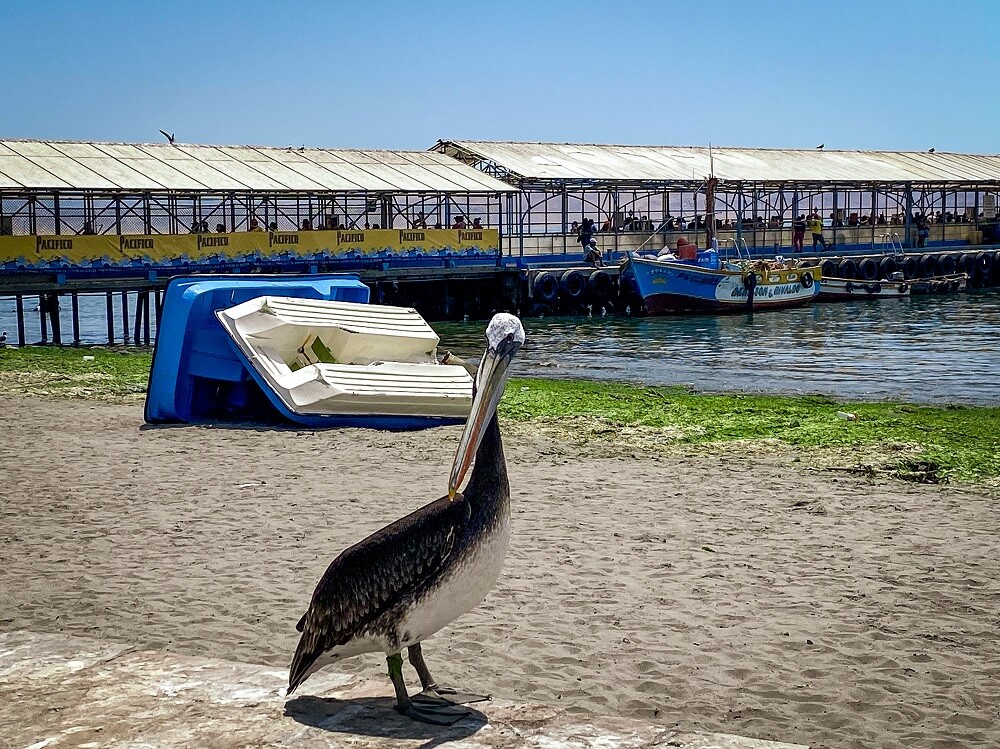
4. Walk Around Paracas Town and See Peruvian Pelicans Up Close
Whilst Paracas itself is small and not the most attractive place in Peru, you should still have a wonder around the town.
It has a beach called Playa Paracas, which isn’t spectacular, but you’ll see some people enjoying some sunshine there. You can walk along the Malecon El Chaco which is a wide pedestrianised walkway filled with souvenir shops, restaurants and giant Peruvian pelicans. Yes, that’s right. I don’t think we’ve ever seen such huge pelicans before. These Peruvian pelicans can be between 137 to 152 cm (4.5–5.0 ft) in length! For reference I’m about 161 cm (5.2 ft) tall!
If you fancy trying some adrenalin rushing sports then you can kitesurf in Paracas. The combination of flat water and constant wind creates the perfect conditions to practice this sport. There are many schools in Paracas you can choose from.
Lastly, if you still have some time to kill and want to have a little overview of the town, then head to Mirador San Martin. It’s located at the entrance of town and it’s only a massive statue on a small hill. But at least it will give you a little sense as to just how vast the desert is and how tiny Paracas looks in comparison.
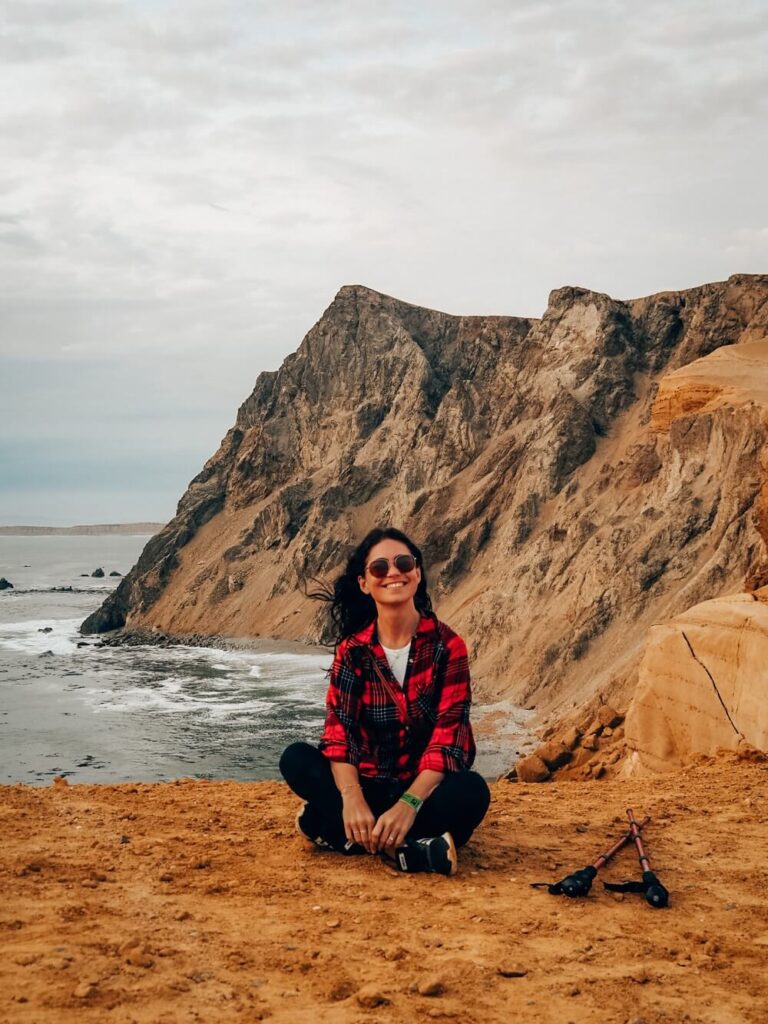

5. Go on the Golden Shadows Trek in Paracas National Reserve
If you’re staying a night in Paracas (which we think you totally should), and are into hiking, then you’ll love this activity. Every evening there’s an organised hike called the Golden Shadows Trek that takes you to the lesser visited parts of Paracas National Reserve.
Since we felt a bit rushed during the initial reserve tour earlier that day, going on a group hike and actually walking through this incredible landscape was the best decision. This way we felt like we could truly appreciate the scale of the place and of course we learned a lot about it through our guide.
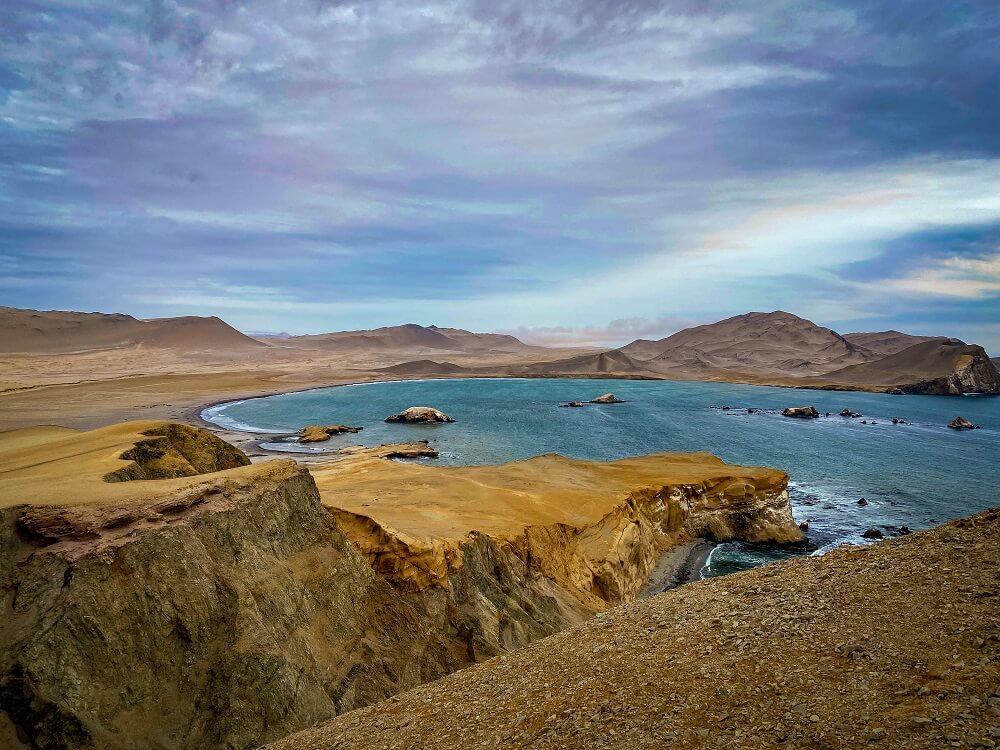
Golden Shadows Trek Tour Information
The tour leaves at 3:30PM every day and costs around $US26 per person. You’ll have to pay an additional S/. 11 per person to enter the reserve. The entire trip takes about 3 hours which includes around 1.5 hours of hiking.
The hike itself is easy to moderate, depending on your experience and fitness levels. Even if you’re an experienced hiker, you might find some parts of the hike a bit sketchy. For this reason, we highly recommend wearing supportive shoes with good grip. You’ll be given walking sticks, which we suggest using to give you some extra support. Make sure to take some water with you to stay hydrated. Lastly, take a jumper or light jacket as it might be hot at the start of the hike, but it’ll get cooler very quickly as the sun sets.
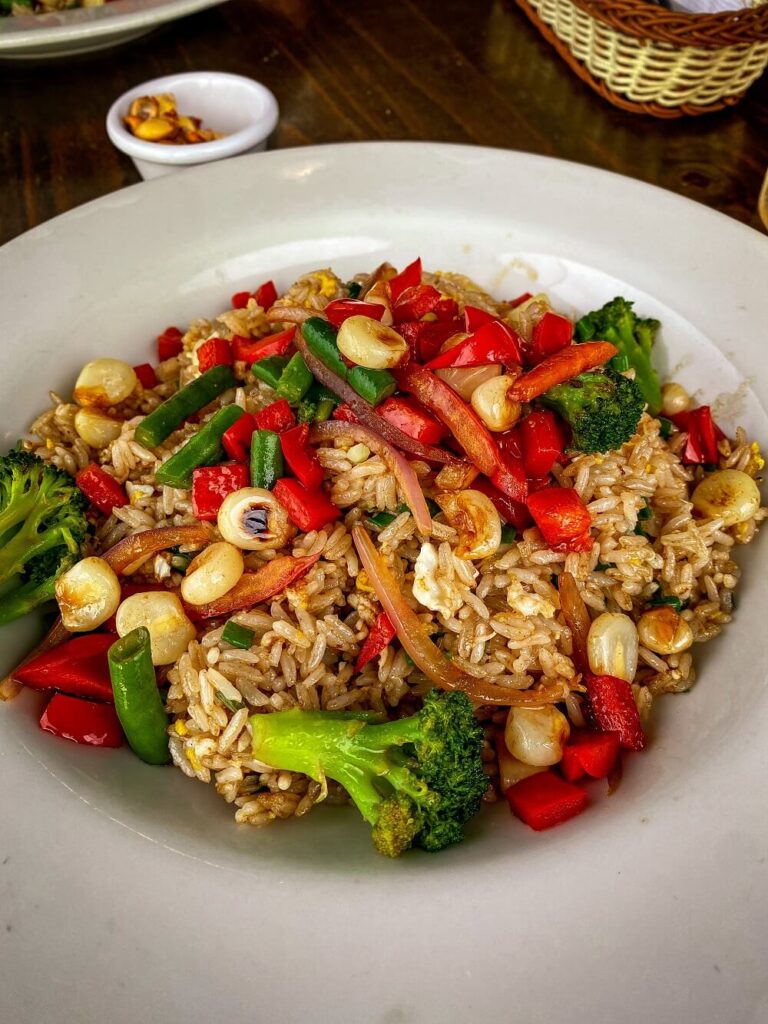
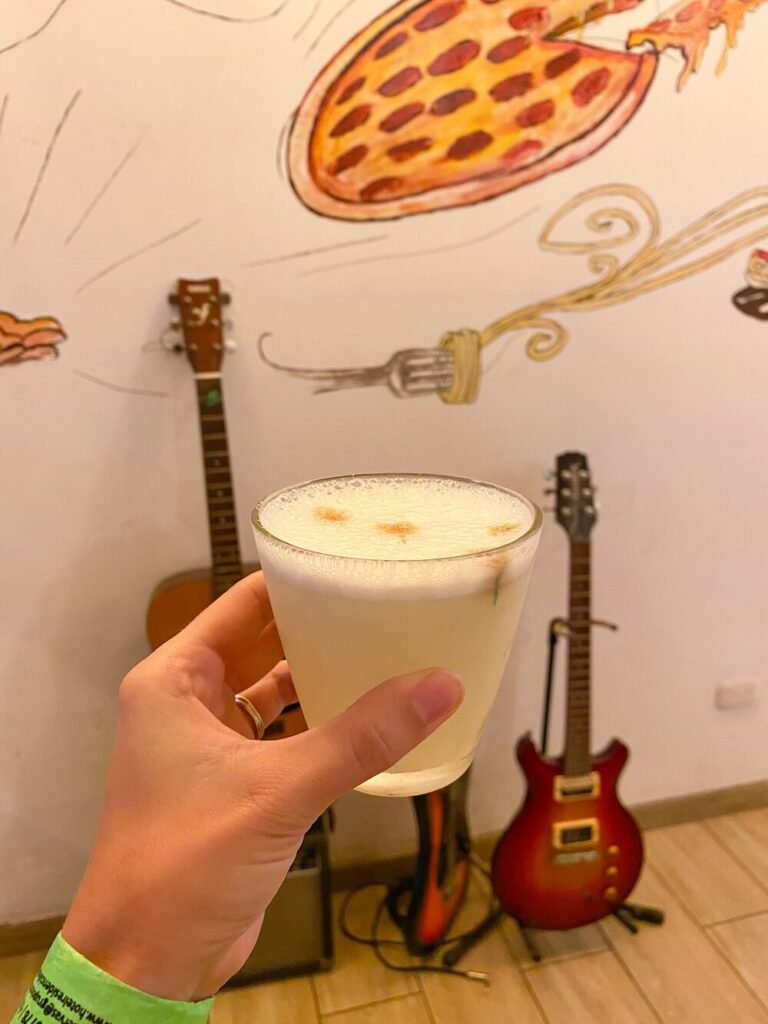
Where to Eat in Paracas
Since Paracas is a resort town, there are plenty of places to eat and grab a drink. Bear in mind that because it’s a tourist hotspot, it’ll be a bit more expensive than other places in Peru. Of course it’s still pretty affordable in general.
Our favourite place to eat was Fruzion. We went there quite a few times because we loved the food and the portion sizes. We tried a few places along the Malecon too like Karamba. Here you can definitely get some typical Peruvian dishes such as Ceviche, Lomo Saltado or Arroz Chaufa.
Since Paracas is located in the Pisco region, make sure to have a Pisco Sour in the evening. If you didn’t know, Pisco is a colourless or yellowish-coloured brandy produced in this area of Peru. Pisco Sour is a cocktail and is Peru’s national drink. (Although Chile also produces Pisco and Pisco Sour is their national drink too). There are many bars in Paracas that have ‘happy hours’ in the evening offering 2for1 on Pisco Sours and other cocktails. We hopped into Pizza Nick & Nate’s for a cheeky pizza and some 2for1 cocktails.
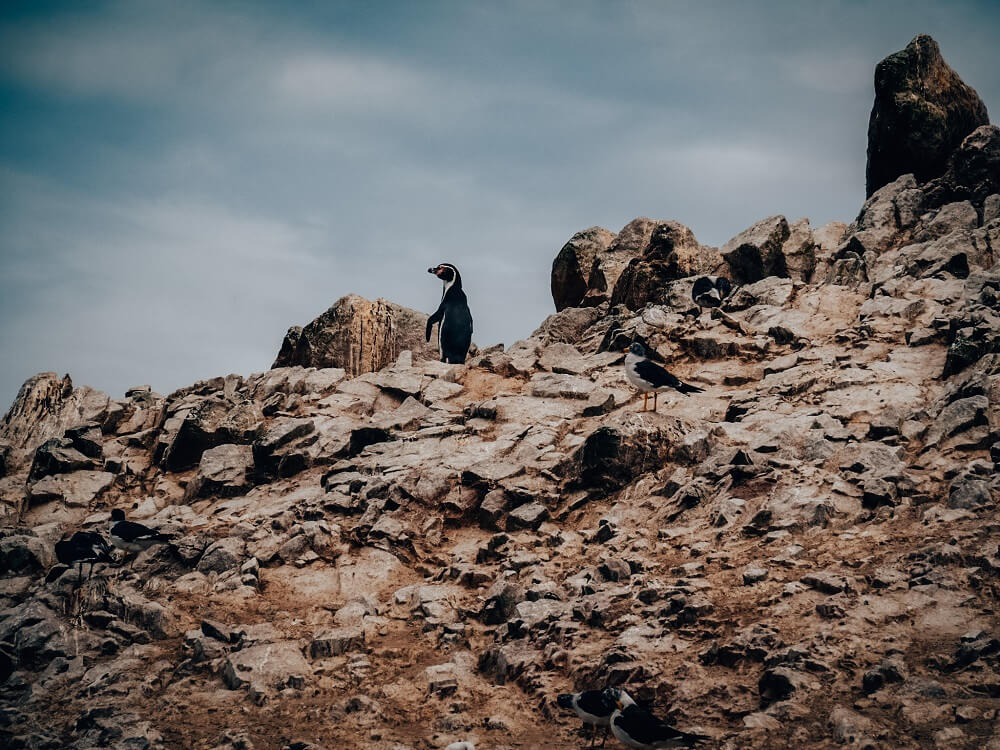
Final Thoughts on Things to Do in Paracas, Peru
If you know us, then you know that the least likely place we’d want to visit when travelling is a resort town. However, deep down we knew that Paracas was more than that and of course the whole ‘poor man’s Galapagos’ thing definitely made us curious about it.
After spending a few more days there than everyone else, we have no regrets. We loved Paracas so much. Hiking the Golden Shadow Trek in Paracas National Reserve was definitely our easiest hike in Peru, but it wasn’t any less impressive. Walking through this crazy landscape before heading to the Andes made us appreciate just how varied Peru’s topography is. Of course, being able to take that boat tour after all the cancellations and seeing the crazy amount of wildlife on Islas Ballestas was something we’ll never forget either. The fact that we only managed to see one lonely Humboldt penguin will always make us wish we could have seen a few more but we’re grateful for the chance to have seen one.
Have you ever been to Paracas before? If so, what was your favourite activity? If not, which activity would be on the top of your list? Let me know in the comments below.
Now, let your adventure begin,

Our Top Travel Resources
Accommodation: For hotels we always use Booking.com and Hostelworld for hostels. We also book longer stays on Airbnb or Vrbo.
Flights: To find the best flight prices we always check Skyscanner, Google Flights or WayAway. Then we also check the airlines’ websites too for comparison.
Car Rentals: We use Discover Cars when we want to rent a car as it compares local, national and international companies.
Activities: If we book organised tours we always check either GetYourGuide or Viator.
Foreign Currency: Whenever we can we prefer to pay in local currency and for that we always use our Wise card. We can easily withdraw money from the ATM or pay by card at most shops and restaurants.
Travel Insurance: We never go anywhere without travel insurance. You never know what will happen on your trip, so good travel insurance like SafetyWing can protect you in case of injury, illness, theft and cancellations.
eSIM and VPN: To get data abroad we use Airalo which is an app that allows you to download a prepaid eSIM to your phone in over 190 countries. Make sure to have a VPN to avoid hackers accessing your personal data when using public WIFI. We use Surfshark which is the only VPN that offers one account on unlimited devices.
Remember…It all starts with a Pin…
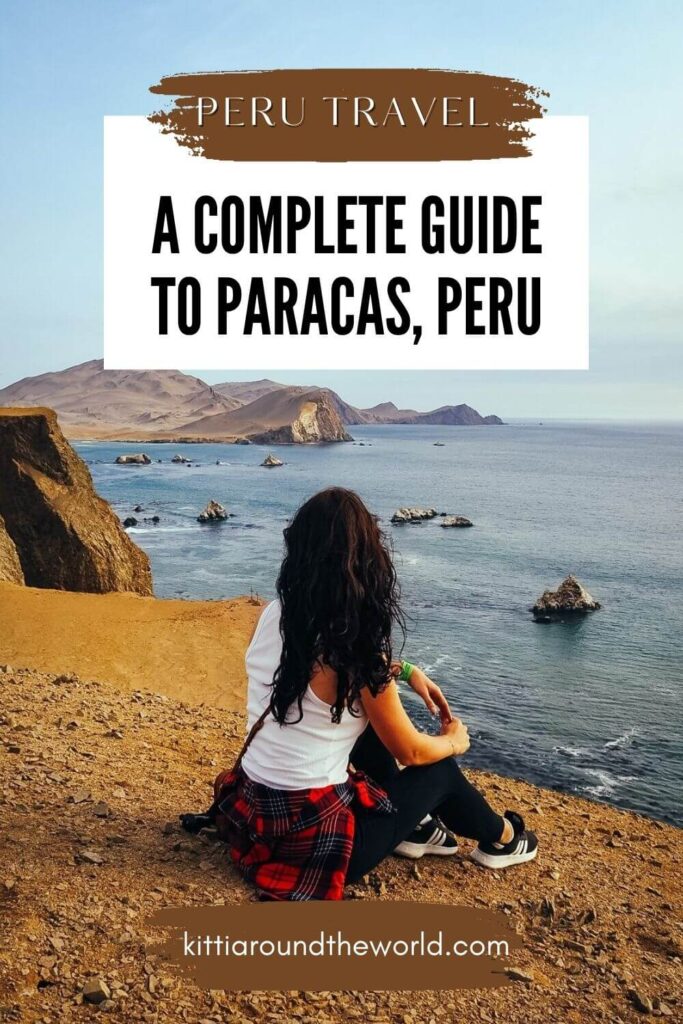
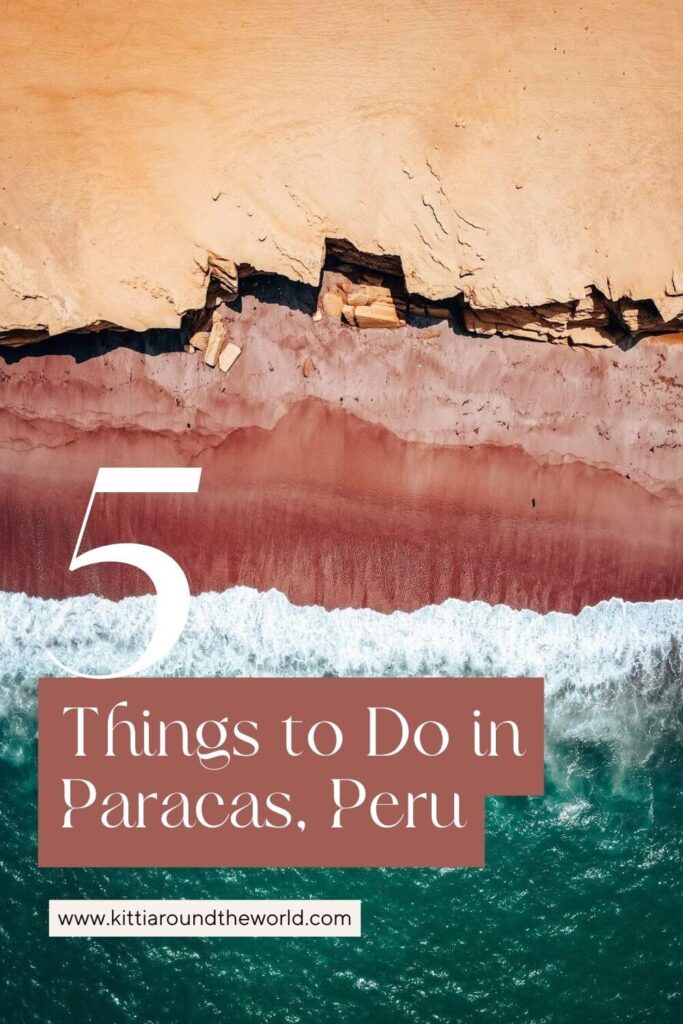


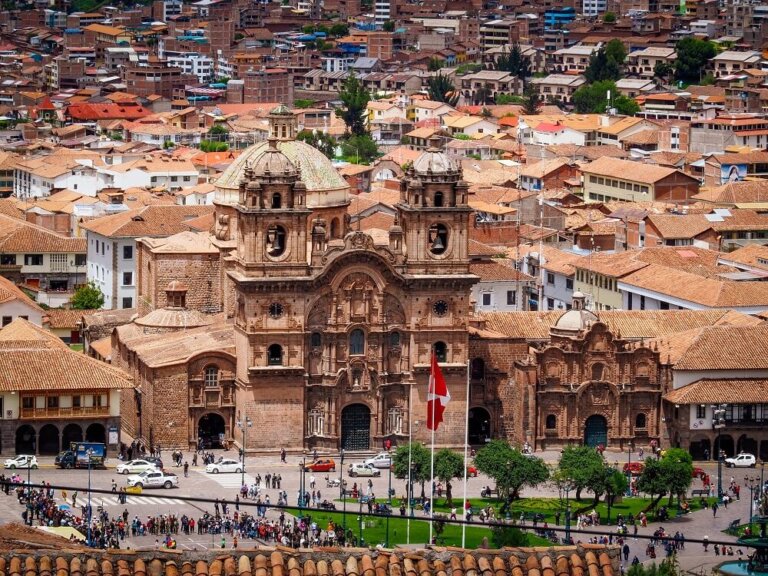
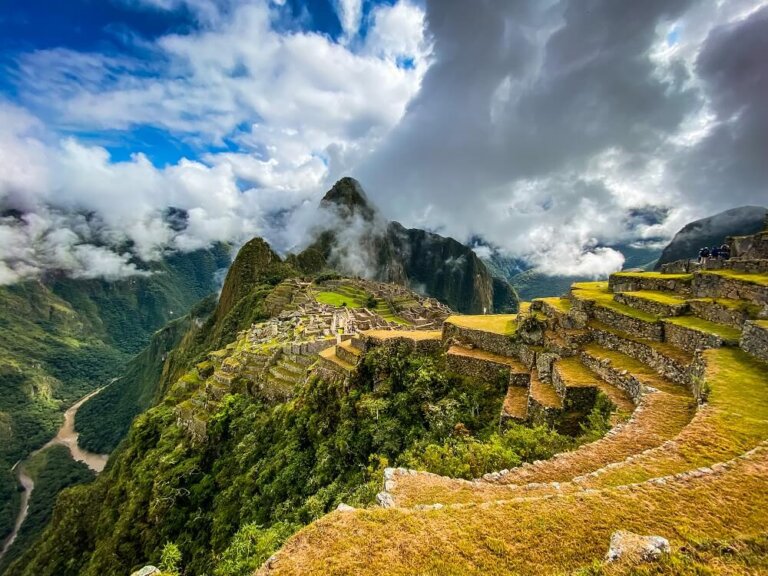

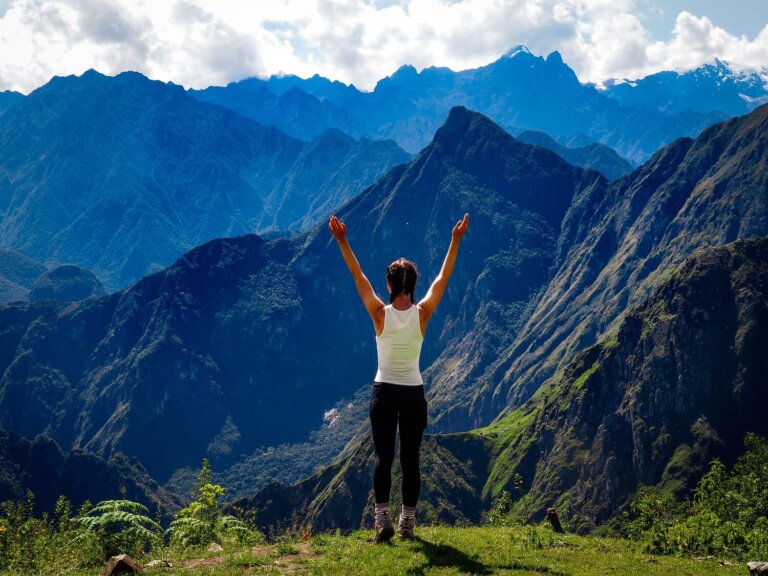

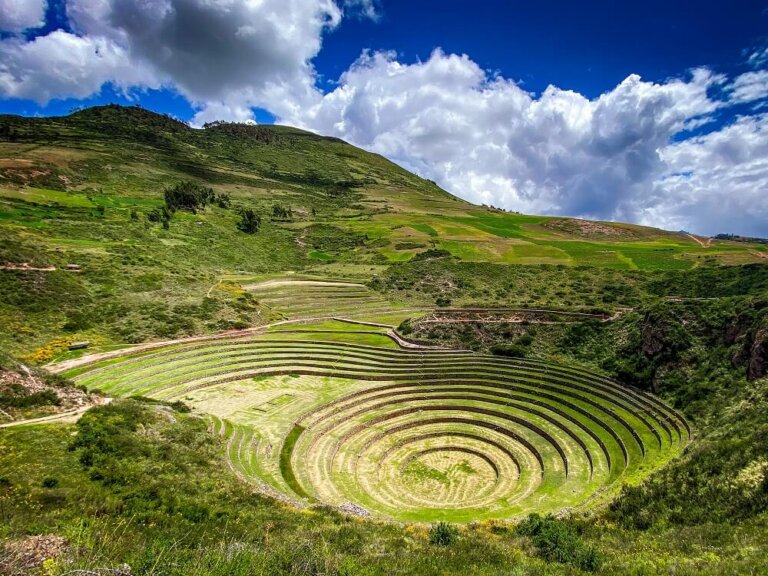
It all looks amazing! That shot of the sea, beach and sand is beautiful! I agree, spending a couple of days there sounds like the best option, if you want to be sure if seeing everything. Thanks for all the tips and advice👍
Paracas was really mind-blowing. The colours in the national reserve were really amazing and so glad that we managed to capture it. It’s definitely a lovely place to spend a few relaxing days in.